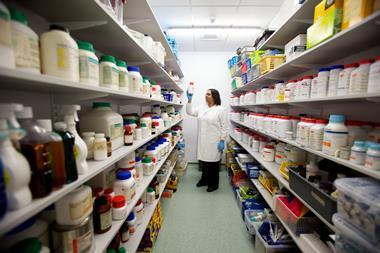The Chemicals Strategy for Sustainability promises the biggest reform since Reach
The European commission adopted the EU Chemicals Strategy for Sustainability on 14 October. This ambitious programme has been touted as the biggest reform of chemical regulations since Reach (registration, evaluation, authorisation and restriction of chemicals).
The strategy forms part of the EU’s flagship Green Deal environment programme, which in 2019 cemented the ambition to make the bloc’s economy sustainable, circular and climate-neutral by 2050.
The strategy provides some optimism that a green and sustainable economic recovery will be promoted by the EU
At its core, the new strategy strives for a ‘toxic-free environment’. It sets out actions to promote use of safer chemicals by industry, while taking a tougher stance on compounds that could pose a risk to human health or the environment.
In this spirit, the commission vows to develop EU criteria for ‘safe and sustainable-by-design’ chemicals and ensure financial support for their commercialisation and uptake. Overall, it wants to minimise the environmental footprint of chemicals in particular on climate change, resource use, ecosystems and biodiversity.
But the strategy also cracks down on some controversial groups of substances, such as endocrine disruptors (EDs). It will introduce legally binding ED identification criteria across all relevant EU laws, and an outright ban on EDs in consumer products as soon as they are identified.
Per- and polyfluoroalkyl substances (PFAS), meanwhile, will be banned in fire-fighting foams and any other uses unless they are ‘essential for society’, the strategy vows. The commission will assess and regulate the chemicals as a group, rather than individually, across relevant EU laws. And the EU will provide research and innovation funding for PFAS substitutes under the Horizon Europe programme.
Other initiatives under the strategy include:
- a ‘one substance, one assessment’ approach to increase chemical testing transparency;
- better access to data on chemicals and information tools for the general public;
- pressure on international markets to improve chemical safety globally;
- zero tolerance for non-compliance with Reach;
- new hazard classes covering environmental toxicity, persistency, mobility and bioaccumulation under the CLP (classification, labelling and packaging) regulation;
- finding a way to address the combination effect to human health and the environment by daily exposure to a wide mix of chemicals from different sources;
- extending Reach registration duties to certain polymers of concern.
The commission plans to introduce all of these measures between now and 2024.
Mixed reception
Experts, industry and environmentalists have widely acknowledged the strategy as a pivotal moment in chemicals regulation. ‘It is clear that EU citizens’ concerns about chemical pollution, as well as the United Nations’ 2019 Global Chemicals Outlook II report – indicating pollution reduction goals have not been met, have strongly shaped the EU’s strategy here, promising urgent action and stronger EU regulation,’ says Camilla Alexander-White, senior policy advisor for the Royal Society of Chemistry.
‘There is a recognition that Covid-19 has had a huge and unexpected impact on us all as individuals and on the economy and the strategy here provides some optimism that a green and sustainable economic recovery will be promoted by the EU.’
Animal rights group Cruelty Free Europe, however, decried the lack of focus on advancing non-animal testing models, saying the strategy’s requirements for more information on polymers and endocrine disruptors ‘will mean millions more animals suffering in tick-list tests’.
The European Chemical Industry Council (Cefic) welcomed the strategy’s commitment to stronger enforcement of existing laws, in particular at borders. But the trade body called it a ‘missed opportunity’ to accelerate how the chemicals industry can deliver on the Green Deal.
‘What we have today reads more like a long list of regulatory measures lacking sufficient clarity on how they will be joined up, how they relate to real-world geopolitical context like Brexit, or how they will add up to achieve the Green Deal objectives,’ said Cefic director general, Marko Mensink. The UK is unlikely to follow an ‘upgraded Reach’ when it implements its own legal framework for chemicals, Mensink predicts. As a result, the country might diverge further from EU chemicals legislation in the coming years.
Cefic and other industry groups are pushing strongly to avoid the new programme resulting in radical changes to Reach, which could upset the ‘careful and workable balance’ of the current regulations. According to the International Fragrance Association (Ifra): ‘In these changing economic times, with Covid-19 and Brexit, we are keen to avoid additional uncertainty that could damage growth and employment.’












No comments yet